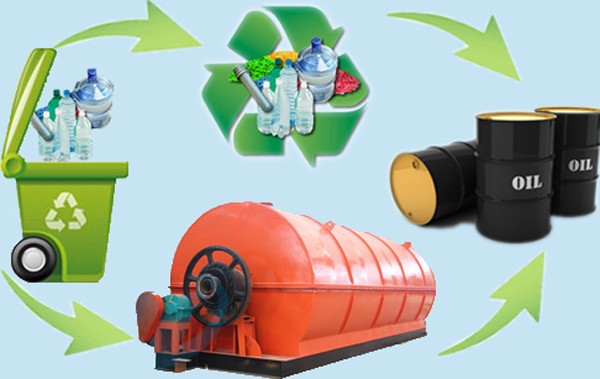Project Report For Plastic Waste to Fuel
Introduction
Project Report For Plastic Waste to Fuel is as Follow:
Plastic trash has posed major environmental challenges, including reduced soil nutrient effectiveness and agricultural production, as well as the emergence of ecological instability. Plastic waste fuel conversion is seen as a potential technique for its disposal and energy utilization. Plastic trash can be transformed into target fuels by modifying chemical bond breaking. Currently, various approaches for converting plastic waste into fuel have been documented, including traditional pyrolysis, innovative heat treatment, and enhanced oxidation.
There are three forms of plastic trash recycling now available: mechanical recycling, incineration, and chemical recycling. Mechanical recycling is the most widely used recycling option, and it involves mechanically grinding or compounding plastic waste for reuse in similar products. However, because this procedure results in lesser plastic quality, recycled products are not commonly employed by the industry.
Although incineration can turn plastic trash into heat and power, it may also emit harmful pollutants such as acid gases and heavy metals. As a result, the final option, chemical recycling, in which plastics are turned into fuels, is regarded as the most promising plastic waste recycling procedure with the fewest negative consequences. However, the current technology of chemical recycling requires extremely high temperatures (over 300°C), which is expensive and inefficient.
Pyrolysis is a method used in plastic recycling that involves the decomposition of polymeric materials to provide high-grade fuel that may be used in diesel engines, boilers, and furnaces. Polyvinylchloride (PVC) and polyethylene terephthalate (PET) are not used in this process because they produce a lot of acids and have low fuel yields. The goal of this project is to turn plastic garbage into oil by heating it under regulated conditions, which will be used in power plants, furnaces, and boilers.

Advantage And Disadvantage
Plastic waste fuel oil is a form of heavy oil with a heating value of >10000kcal/L, which is higher than some diesel, and can be used as a diesel, coal, or biomass fuel. and wood substitute in boilers, cement factories, steel mills, and glass factories, among other places. A steel mill, for example, will use hundreds of tonnes of fuel oil derived from plastic trash. After getting an order for plastic fuel oil from a nearby steel factory, our Macedonia customer recently expanded his waste pyrolysis plant business.
However, there are several drawbacks to producing fuel oil from plastic trash. Fuel oil derived from plastic waste has more sulphur than regular diesel, but this is not a cause for concern because many enterprises are fitted with environmental protection equipment that cleanse the smoke produced during the heating process. Another downside of fuel oil derived from plastic waste is its lower flash point. The flash point of fuel oil obtained from plastic trash is 40 degrees, whereas standard diesel’s flash point is roughly 50 degrees. The flash point has the most influence on fuel oil transportation, however our clients in many parts of the world have already proven that fuel oil transportation is not an issue.
Market Potential of Plastic Waste to Fuel
The global plastic to fuel market is worth USD 302.91 million in 2022 and is expected to be worth USD 2308.57 million by 2030, growing at a CAGR of 28.90% over the forecast period.
Growing demand for liquid fuel in the end-user industry, combined with the cost-effectiveness of pyrolysis over other thermal degradation technologies, will increase the market segment penetration of plastics-to-fuel. Plastics are thermally decomposed in the absence of oxygen during the process. The procedure allows for the reuse of trash’s energy and raw resources, reducing the environmental impact of improper garbage disposal.
The growing need for energy generation from trash, expanding environmental concerns, and increased demand from the recycling industry are some of the reasons driving the global plastic-to-fuel market’s growth. Furthermore, rising public awareness of greenhouse gas emissions (GHG) is increasing global plastic to fuel market share. According to data supplied by the United States Environmental Protection Agency (EPA), the largest sources of greenhouse gases emitted by human activities are the gas and business sectors. Carbon dioxide accounted for 65% of the share in the gas sector, while electricity and heat production accounted for 25% in the economic sector.
Project Report Sample On Plastic Waste to Fuel
Need Help?
Create 100% Bankable Project Report
